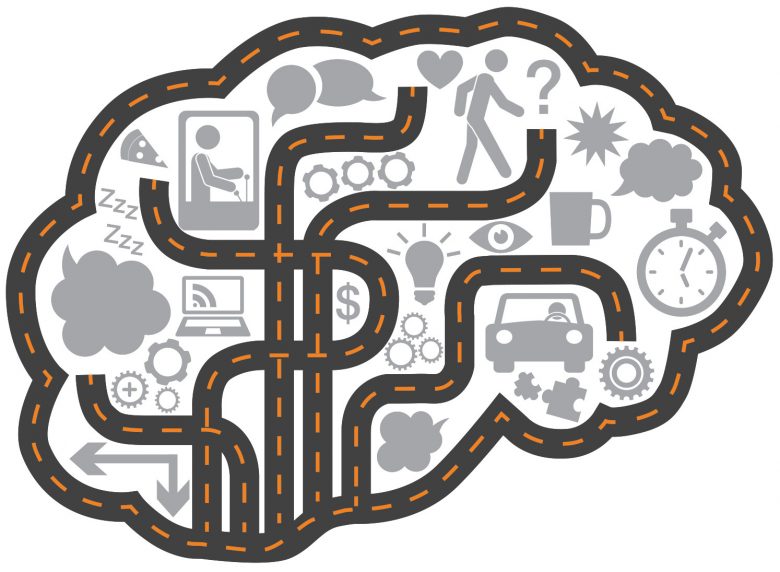This is an adapted excerpt from our free guide on distracted driving.
Combating distracted driving requires a lot more than keeping the cellphone out of reach when you’re in the car. In fact, it starts before you or your employees set foot in your vehicle. It’s important for safety professionals to understand exactly what distraction looks like and to help employees recognize how easy it is for mental strain to take their focus away from driving.
Mental multitasking and cognitive load
Multitasking is a myth. The human brain can only do one thing at a time—when we “multitask” the brain actually switches rapidly back and forth between the two tasks.
That requires a lot of mental work. And even basic, attentive driving requires numerous different tasks—from steering to monitoring speed to thinking about safe braking distances and looking out for pedestrians and other vehicles.
The AAA Foundation for Traffic Safety conducted tests on how much mental capacity different actions require when behind the wheel. You can see the results in the chart on the right. The study concluded that “increasing the cognitive workload of the in-vehicle secondary tasks resulted in systematic increases in cognitive distraction.”
The more you do—like eating or talking on the phone—the busier your brain is and the less it can focus on driving (or anything else).
Eyes on task and driving without awareness
The solution to mental distraction isn’t only to keep your eyes on the road. Even when people are looking at something, they don’t necessarily mentally register it. (This is one of the reasons why slips and falls happen even when wet floor signs are used.)
We’ve all had a feeling of being on autopilot during a drive—our bodies react automatically to external events (like changing lanes when there’s a slow car ahead) but our minds don’t quite register it. These types of drives feel like they go by in a blur.
Driving without awareness has been referred to as “highway hypnosis” or “white line fever” for the way people zone out or forget long stretches of a trip as if they were hypnotized. We now know this trance-like state is actually a reduction in awareness and it shows that just because something is in front of you doesn’t mean you see it.
Studies and common sense both suggest that as attention goes down, the chances of a car crash go up. It takes having your eyes and your mind on task to fight off the inattention and complacency that can settle in during a long drive. And that takes skills and practice.
Read Driving Distraction Away for a full overview on how safety professionals can effectively reduce distraction behind the wheel—as well as in the workplace, at home and everywhere else distraction occurs.

